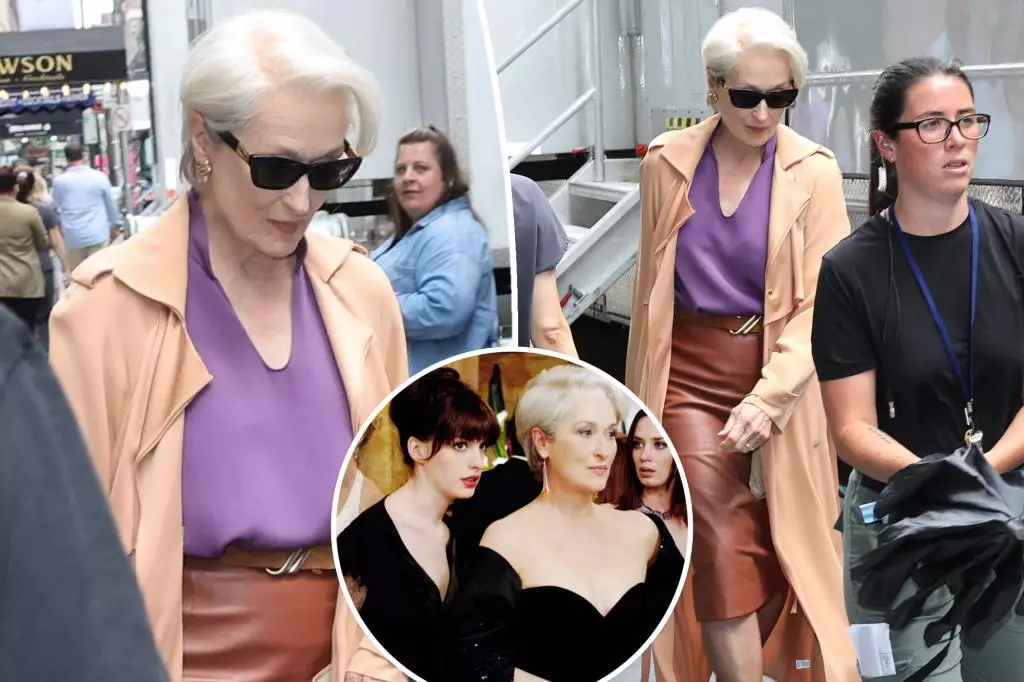In an era saturated with remakes and sequels, few projects manage to reignite the original magic while promising new depths. “The Devil Wears Prada 2” embodies this rare phenomenon, blending nostalgia with contemporary relevance. The return of Meryl Streep’s iconic Miranda Priestly signifies more than a mere continuation; it signals an opportunity to delve deeper into themes of power, artistry, and the relentless pace of modern media industries. This sequel isn’t just about revisiting beloved characters; it’s a bold statement about resilience in a shifting landscape of magazines and aesthetics. The film’s ability to draw in a new generation of viewers, while honoring the classic charm of the first installment, underscores its potential to redefine sequels as meaningful cultural commentaries rather than superficial cash grabs.
Reinventing Characters and Power Dynamics
What makes “The Devil Wears Prada 2” particularly intriguing is its focus on how its characters evolve amidst changing industry realities. Miranda Priestly, once depicted as an almost mythic figure of style and authority, now faces the complexities of an industry in decline. Her character’s reemergence offers an opportunity to explore themes of adaptation and authority in a digital age where print media struggles against online dominance. Anne Hathaway’s Andy Sachs, meanwhile, appears to be thriving, hinting at a narrative arc of resilience and adaptability. Emily Blunt’s character, now a high-powered executive, embodies ambition transformed into authority — a reflection of shifting gender roles and the empowerment of women in business. The casting choices and character updates suggest a deliberate effort to explore how individuals can reinvent themselves amid upheaval.
Visuals and Style as Narrative Devices
Fashion has always been intertwined with the storytelling of “The Devil Wears Prada.” From Streep’s icy ensemble to Hathaway’s vibrant, eclectic looks, the film uses clothing as a storytelling tool that conveys character evolution and emotional depth. The recent sightings, such as Streep’s sophisticated tan trench coat and Hathaway’s colorful outfits, reveal a conscious effort to visually symbolize their characters’ journeys. In particular, Hathaway’s choice of vibrant, experimental outfits hints at her character’s growth — moving beyond the constraints of her initial role. The involvement of designers and stylistic choices hints at a movie that will elevate fashion to an even more integral role in narrative development, emphasizing how appearance often mirrors inner transformation and professional reinvention.
The Cultural Significance of the Return
The anticipation surrounding this sequel is rooted in more than just nostalgia; it’s a reflection of society’s obsession with reinvention and resilience. The original film became a cultural phenomenon because it captured the nuances of ambition, pressure, and the high-stakes world of fashion publishing. Its sequel, with its focus on industry decline and character evolution, signifies a broader commentary on how professions adapt in turbulent times. The new casting additions — Kenneth Branagh, Lucy Liu, Justin Theroux, and B.J. Novak — promise to bring fresh perspectives and storylines, further enriching the narrative landscape. The film sets the stage for dialogue about industry power dynamics, innovation, and how characters evolve when faced with personal and external upheaval.
The Future of Fashion and Media in Cinema
Ultimately, “The Devil Wears Prada 2” is more than a movie — it embodies ongoing conversations about the transformation of media, fashion, and cultural authority. As traditional magazines continue to decline, and digital platforms rise, the film’s narrative becomes a mirror for societal shifts. Meryl Streep’s iconic portrayal of Miranda Priestly — a figure inspired by the powerful Vogue editor Anna Wintour — remains a symbol of how style and influence intersect. Her recent images and the attention to costume details suggest that the sequel will use fashion not just as aesthetic choice but as a storytelling device that questions and critiques contemporary power structures. With its release looming in 2026, this film promises to be both a nostalgic revisit and a sharp commentary on modern industry realities.
By reevaluating the characters’ journeys and the evolving landscape they inhabit, the sequel offers a potent reminder: resilience, reinvention, and style are timeless, especially when wielded with insight and purpose.

